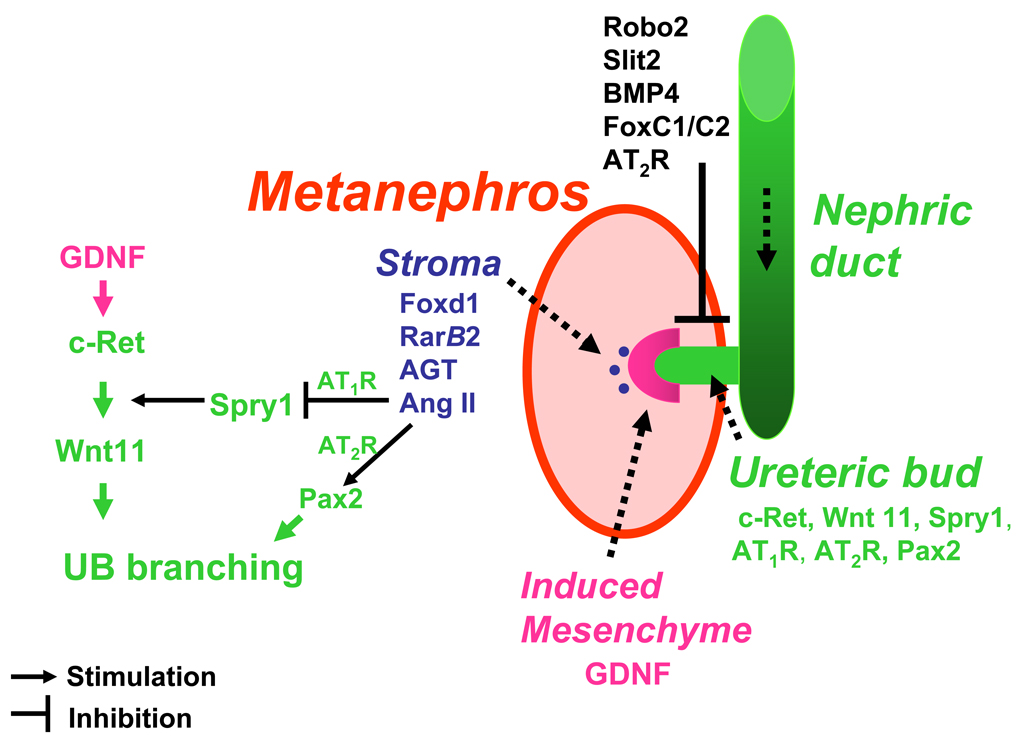Figure 1.
Gene regulatory networks in kidney development. The nephric duct is formed from the intermediate mesoderm and extends caudally. On E10.5 in mice and E28 in humans, nephric duct forms an outgrowth, the ureteric bud (UB), which invades the mesenchyme. UB induces mesenchyme to undergo patterning into two compartments: induced (metanephrogenic) mesenchyme and stroma. Metanephrogenic and stromal mesenchymal compartments interact reciprocally with the UB to form the metanephros. Multiple gene regulatory networks have been shown to regulate UB elongation, branching and nephron formation. Robo2, Slit2, BMP4, FoxC1/C2 and AT2R act to restrict GDNF expression anteriorly and specify correct site of UB outgrowth from the nephric duct. GDNF/c-Ret/Wnt11 pathway is the major positive regulator of UB development. Angiotensinogen (AGT) and Ang II are novel stromal factors that regulate UB morphogenesis. Ang II, acting via the AT1R, inhibits Spry1 expression and thereby releaves inhibition of signaling via the GDNF/c-Ret/Wnt11 pathway. Acting via the AT2R, Ang II upregulates Pax2. This stimulates UB branching.

